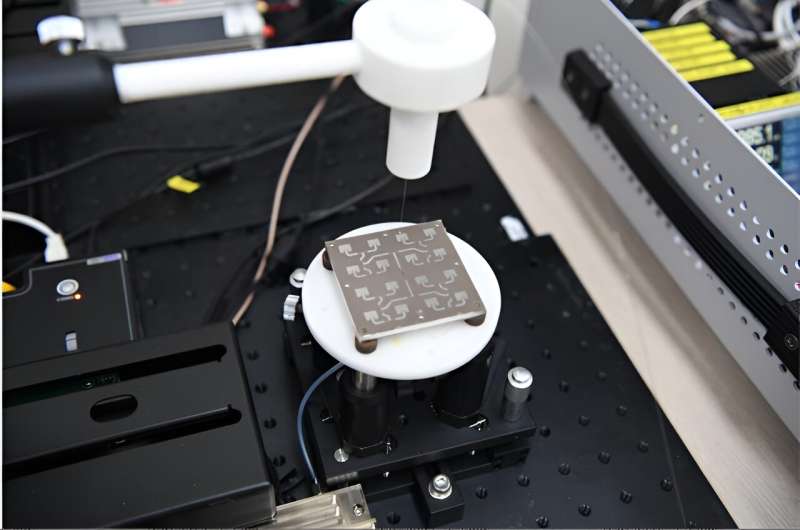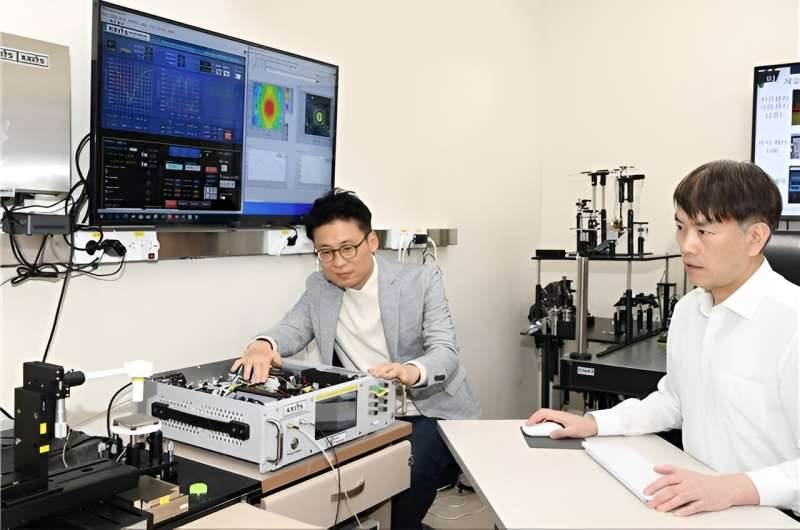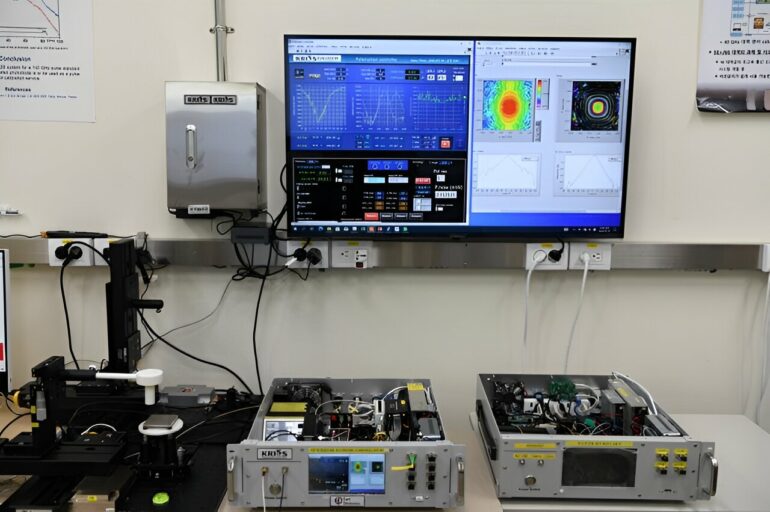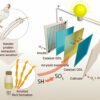In April 2019, South Korea ambitiously launched the world’s first 5G mobile communication service. While 5G in the 3.5 GHz band was commercialized, the communication quality did not meet consumer expectations. The installation of base stations in the 28 GHz band, which would provide true 5G service, was slow due to profitability concerns.
Consequently, the government reclaimed the frequency bands from all three major telecommunications companies last year. As countries around the world prepare for the 6G era, it is time to reflect on the disappointing experiences of 5G commercialization and focus on building the 6G infrastructure.
Korea Research Institute of Standards and Science (KRISS) has succeeded in developing domestically produced equipment to evaluate the performance of 6G communication antennas.
The paper is published in the journal IEEE Transactions on Instrumentation and Measurement.
As the frequency band increases, communication speed typically improves, but the communication range shortens. Since 6G communication (planned for 7–24 GHz) has a higher frequency band than the current 5G communication (3.5 GHz), antenna-related technologies are needed to address the issue of shortened communication range.
To ensure the proper functioning of these advanced 6G antennas, accurate performance evaluation is essential. Precise performance measurements can help identify and correct causes of malfunction in the prototype stage, improve quality, and shorten the time to mass production.
The research team from the KRISS Electromagnetic Wave Metrology Group has developed a 6G antenna measurement system based on a non-metallic sensor using an optical method.
To evaluate antenna performance, the sensor is placed at a certain distance to measure the electromagnetic waves generated by the antenna. Previously, metallic sensors were used. This caused coupling effects due to the electromagnetic wave reflection properties of metal, resulting in distorted measurements. This problem was easily resolved by replacing them with non-metallic sensors the size of a grain of rice.

6G antenna performance measurement sensor developed by KRISS. © Korea Research Institute of Standards and Science (KRISS)
The distance between the sensor and the antenna during measurements has decreased from several meters to a few millimeters, with measurement time reduced by more than one-tenth. Moreover, unlike previous measurements that required very large, fixed facilities such as anechoic chambers, the measurement equipment developed by KRISS is lightweight, similar in size and weight to a computer tower, making it portable and suitable for use in standard laboratories.
KRISS has transferred this technology to East Photonics Co., Ltd., a company specializing in fiber optic communication and repeaters, for a royalty of KRW 300 million, and a signing ceremony was held on April 8 at the KRISS administrative building.

KRISS principal researchers Young-Pyo Hong (left) and Dong-Joon Lee (right) are testing the performance of a 6G antenna prototype using the new measurement system. © Korea Research Institute of Standards and Science (KRISS)
Young-Pyo Hong, a principal researcher at KRISS, stated, “Currently, domestic research related to 6G is concentrated only in the materials and components fields, and studies have yet to be conducted on measurement equipment. Learning from the disappointing experiences with 28 GHz 5G communication, we plan to prioritize the establishment of 6G infrastructure, with the development of measurement equipment being a crucial part.”
Ho-Joon Seok, president and CEO of East Photonics Co., Ltd., said, “All smartphone and base station antenna measurement equipment is expensive and foreign-made, but commencing now we will take the lead in domesticating 6G antenna measurement equipment in close collaboration with KRISS. Unlike existing measurement equipment, our lightweight and mobile measurement equipment will be a strong point as we steadily plan for commercialization.”
More information:
Dong-Joon Lee et al, Integrated Electrooptic Sensor for Intense Electromagnetic Pulse Measurements, IEEE Transactions on Instrumentation and Measurement (2023). DOI: 10.1109/TIM.2023.3284921
Provided by
National Research Council of Science and Technology
Citation:
Researchers successfully develop domestic 6G antenna measurement system (2024, June 27)



